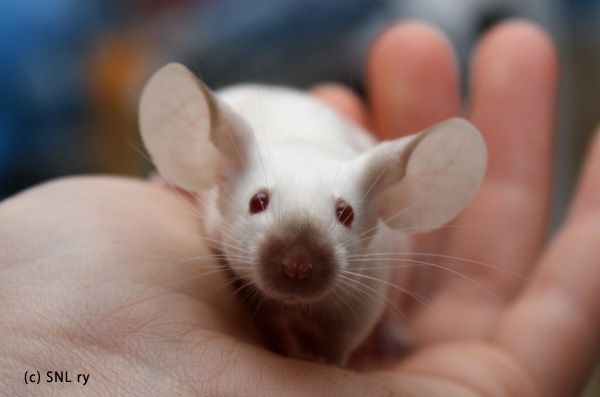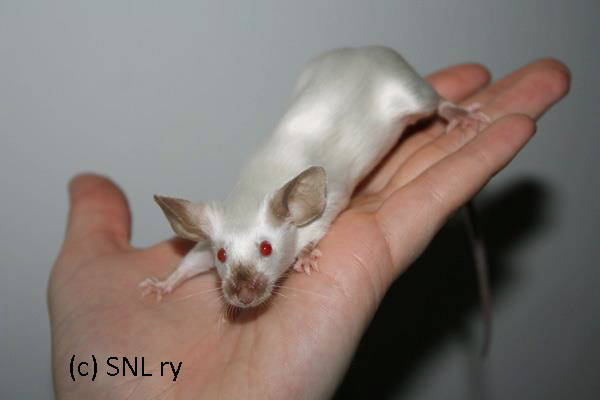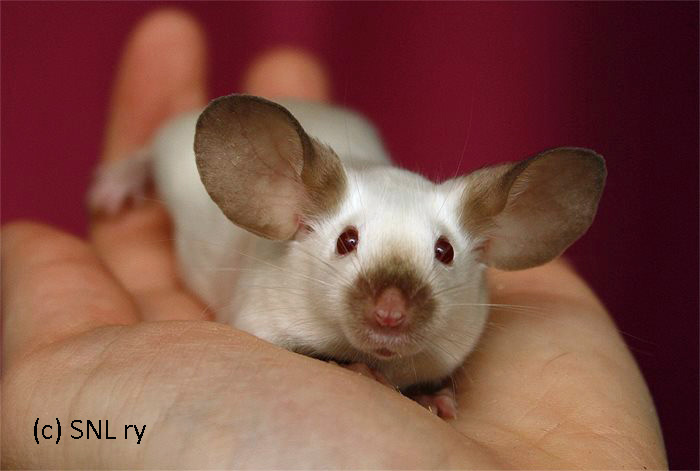Varieties
Shaded and Pointed
Himalayan (hi)
a/a B/* ch/c D/* P/*
"Eye pink. Body colour as white as possible. Strong, clear points shall be present in the muzzle, ears, feet, tail and tail root.Nose point to extend from nose up to eyes, foot points from tips of toes to the hocks. Ear points to include the whole of ear and tail point to include tail and tail root."
Breeding information below the pictures.
Note: This article is old and waiting to be rewritten.
Quick Look
Himalayan is a white mouse with darker extremities; nose, ears, tail and feet. Genetically himalayan is a siamese with an albino factor (ch/c)
The main problems with breeding himalayan is getting the body colour as light as possible without losing the point colour. The main point colour in himalayan is seal point. Chocolate, blue and lilac points do exist but their points are very light. All point colours are shown under the same name and the point colour in question should be taken into consideration while judging. However, it's the black background (a/a B/* ch/c D/* P/*) himalayans that look the best.
I've seen recommendations of using black-related albinos to darken the point colors, but these may be hard to get unless you mate black to PEW on purpose. Another method is to use as light as possible siamese mice. In fact, if there are no albino babies in the litter of two himalayans, it is possible that the breeder is actually dealing with light siamese mice.
Himalayan mice are white when very young and the points develop with age. Avoid using himalayan mice with sooty body colour, as this will most likely to be passed to the young and is a fault hard to breed out if let in a strain. This is because these "sooty himalayans" are most often genetically siameses, not himalayans, although a good amount of umbrous seems to bring on kind of shading. You shouldn't use mice from the agouti croup. The standard states that the points may be any standard colour. There can be for example blue, lilac, chocolate and black based himalayans but it is the black based himalayans that develop nicest points. With lighter colors the points become quite light, almost only smudges which isn't so attractive.
The himalayan standard formerly allowed black and pink eyes (some other clubs' standards still do), it isn't possible to have black eyed himalayans with the himalayan genotype. Therefore, these mice are something else - Colorpoint Beiges bred to have almost a pure white body.



